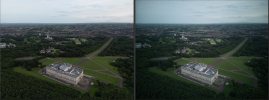I have a Mini 3 Pro and always take images using both JPG and RAW formats as RAW supposedly gives more flexibility when it comes to editing them afterwards. However, when I open a RAW image in my photo editing software (I use Affinity Photo) the image is washed out, dull and a lifeless. When I open the JPG version of the image it looks totally fine and just like how the photo was taken at the time. It's a bit baffling and thoguht my software isn't good at editing RAW images taken on a DJI drone.
So for those people out there who shoot and edit RAW images on their DJI drones.. I was just wondering what photo editing software you use?
Does DJI have its own purpose built software for doing this even?
So for those people out there who shoot and edit RAW images on their DJI drones.. I was just wondering what photo editing software you use?
Does DJI have its own purpose built software for doing this even?











